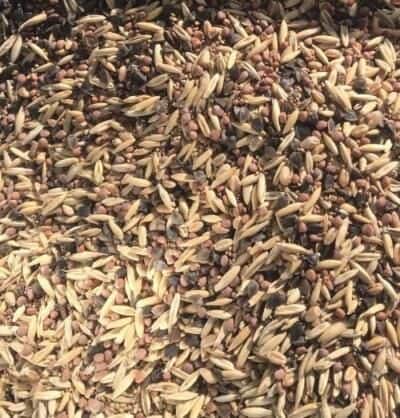A Landscape Shift: Opportunities and Challenges for Organic Agriculture Under a Trump Administration
Gordon’s Policy Corner, November 2024
This year’s election results have brought with them a significant shift in the political landscape in Washington, which will undoubtedly influence food and agriculture policy at the federal level. While every presidential election brings change, the dynamics of this year’s tumultuous election are particularly significant. With a Trump presidency and a solid, multi-seat Republican majority in the Senate, the USDA will likely be shaped and directed in line with the new administration’s vision. The House remains an open question, but current projections suggest the Republican majority will at least be maintained, if not strengthened.
What does this mean for the Organic Farming Research Foundation and organic agriculture at large? We are stepping into a period of uncertainty, with many unanswered questions about Congressional priorities and the coming USDA leadership and their associated agenda. For context, during Trump’s previous presidency, the USDA’s cabinet position was last to be nominated, January 18th, 2017, suggesting that this agricultural leadership and direction may not come quickly. We must remain nimble and on our toes until we understand the priorities this new administration plans to act on.
A Potentially Hostile Funding Environment

Over the next two years at least, we anticipate facing a very challenging financial climate in Congress. Budget allocations for agricultural research, technical assistance, and conservation funding may be targeted as an opportunity for budget cuts. The push for austerity measures could represent significant hurdles for securing the resources organic farmers and researchers need. But, even among these challenges there are potential opportunities.
One factor worth noting is the influence of Robert Kennedy Jr. on Trump’s campaign. RFK Jr. has voiced support for certain agricultural values that align with organic and regenerative organic production. It remains unclear how much sway he will hold in shaping agricultural policy, as Trump has made many unkept promises in the past. But, this alignment opens up the possibility for strong bipartisan support for organic agriculture research. Recent meetings OFRF staff have had with conservative members of Congress have revealed some exciting interest in organic agriculture. While we cannot rely on this support alone, it does represent an opportunity for expanding organic agriculture.
Our Path Forward: Advocating for Organic Farmers
Despite the uncertainty and potential funding challenges, our mission remains the same:
“Organic Farming Research Foundation works to foster the improvement and widespread adoption of organic farming systems. OFRF cultivates organic research, education, and federal policies that bring more farmers and acreage into organic production.“
As outlined in our new strategic plan, our policy work will continue to focus on advocating for organic farmers, and ensuring that the research programs and supports they depend on are not only preserved, but expanded. Our strategic plan emphasizes several key areas:
- Securing Funding for Organic Research: We will continue to make the case for robust investments in organic agriculture research. The data is clear: organic practices benefit not only certified organic farmers but also conventional farmers who adopt sustainable techniques, improving soil health, reducing chemical dependency, and increasing resilience to climate change.
- Promoting Organic as Climate-Smart Agriculture: We will work to ensure that organic systems are recognized as essential tools for climate mitigation and adaptation. Organic practices are proven to enhance carbon sequestration and conserve water, and we will highlight these benefits in discussions with policymakers.
- Building a Lasting Bipartisan Community: We recognize that the best way to advance our priorities is through collaboration. Our strategy will include building and leveraging relationships across the aisle, making organic agriculture a bright spot in bipartisan conversations.
The potential for bipartisan support hinges on our ability to communicate the universal benefits of organic research. Research investments not only support organic certification standards but also generate best practices that conventional operations can use to reduce inputs and build healthier ecosystems. This broad appeal makes organic agriculture a rare unifier in a divisive political environment.
As we navigate this changing landscape, we call on our community to stay engaged. We will be developing a variety of ways you can get involved if you’re interested. The influence of grassroots advocacy cannot be underestimated, especially when we emphasize how organic practices contribute to healthier soils, cleaner water, and more resilient food systems for everyone. Keep an eye out for those tools and resources early next year!
Our Commitment
Regardless of the makeup of Congress or the Executive Branch, our commitment to organic farmers and sustainable agriculture will not waver. We will continue to fight for research programs and policy supports that empower farmers to adopt practices that are good for the planet and their bottom line. The winds of change in Washington sometimes shrouds our path forward, but our mission to foster the improvement and widespread adoption of organic farming systems remains unshakeable.
Stay tuned, stay engaged, and know that we are here, as always, working tirelessly to ensure that organic agriculture has a seat at the table and a voice in the conversation.
Eat well and breathe deeply,
Gordon





























